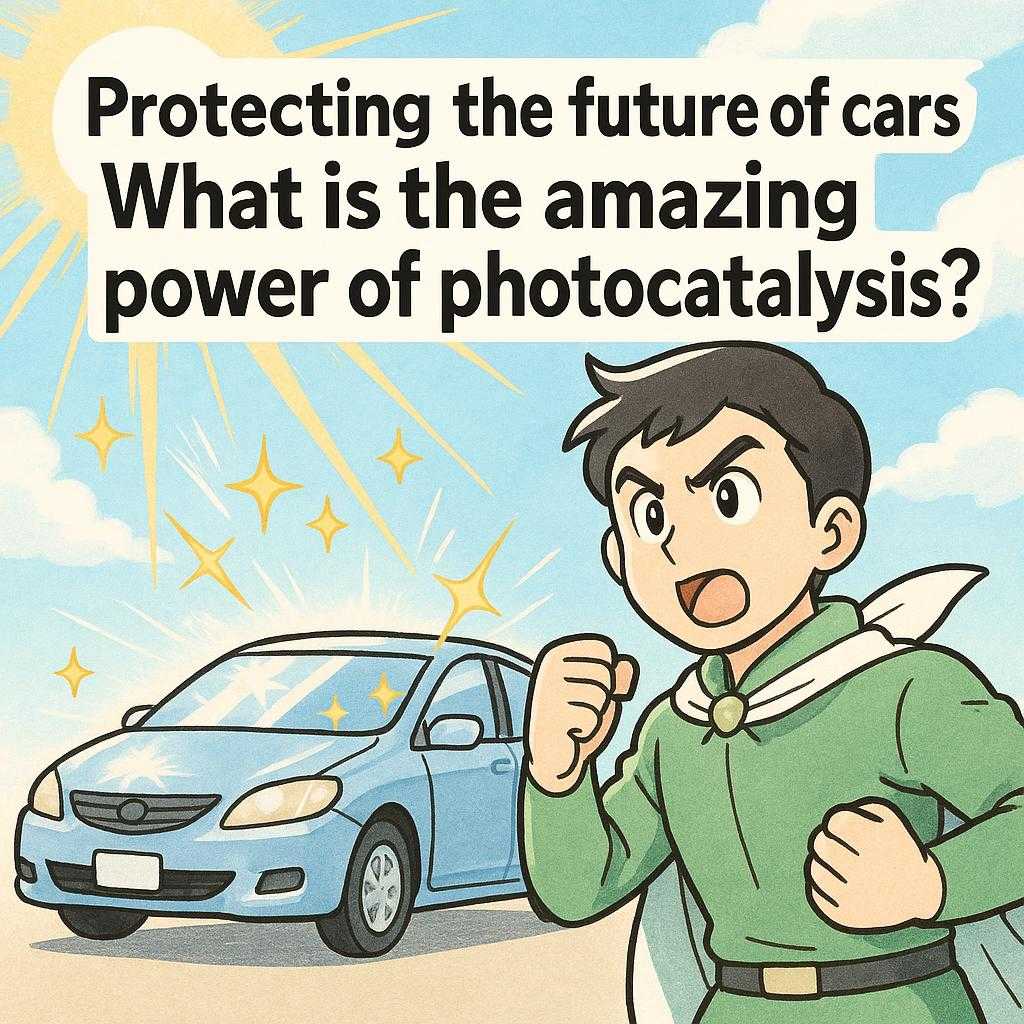Protecting the future of cars! What is the amazing power of photocatalysis?

Unveiling the Power of Photocatalysis for a Greener Future
Photocatalysis stands at the forefront of sustainable technology, offering transformative solutions for energy and environmental challenges. This rapidly evolving field is paving the way for innovations in artificial photosynthesis, pollution control, and renewable energy sources. As global energy demands soar and environmental concerns mount, the potential of photocatalytic systems becomes increasingly critical. Discover how this versatile technology can protect our future by harnessing natural processes to create cleaner, more efficient solutions.
Understanding Photocatalysis and Its Role in the Automotive Industry
Photocatalysis is a groundbreaking process that utilizes light to accelerate chemical reactions, offering a promising solution for various environmental and industrial challenges. In the context of the automotive industry, this technology holds significant potential for advancing sustainable practices and enhancing vehicle longevity.
The Science Behind Photocatalysis
At its core, photocatalysis involves the use of a catalyst, typically a semiconductor material like titanium dioxide (TiO2), which becomes activated upon exposure to light. This activation leads to the generation of reactive species capable of breaking down pollutants or facilitating other chemical reactions. The process is inherently clean, as it relies on natural light sources and does not produce harmful byproducts.
Applications in Vehicle Maintenance and Environmental Protection
One of the most compelling applications of photocatalysis in the automotive sector is its ability to reduce emissions. By integrating photocatalytic materials into vehicle exhaust systems, harmful pollutants such as nitrogen oxides (NOx) can be effectively decomposed into less harmful substances. This not only helps in meeting stringent emission standards but also contributes to cleaner air quality.
Moreover, photocatalytic coatings on car surfaces can prevent dirt accumulation and reduce the need for frequent washing. These coatings can break down organic compounds that settle on vehicles, maintaining a cleaner exterior with minimal effort. This feature not only enhances aesthetic appeal but also extends the lifespan of paintwork by protecting it from environmental damage.
Photocatalysis as a Catalyst for Hydrogen Production
The production of hydrogen fuel through photocatalytic processes represents another exciting frontier. Photocatalysts can harness sunlight to split water molecules into hydrogen and oxygen, providing a renewable source of clean energy. This method offers an emission-free alternative to traditional fossil fuels, aligning with global efforts towards decarbonization and sustainable energy solutions.
Incorporating hydrogen fuel produced via photocatalysis into vehicles could revolutionize transportation by reducing reliance on non-renewable energy sources. Hydrogen-powered vehicles emit only water vapor, making them an attractive option for reducing greenhouse gas emissions.
Challenges and Future Directions
Despite its promise, photocatalysis faces several challenges that must be addressed to realize its full potential in automotive applications. The efficiency of current photocatalytic materials under visible light remains suboptimal, necessitating further research into novel materials and reaction processes.
Single-atom photocatalysts are emerging as a promising avenue due to their superior catalytic activity and selectivity. These catalysts can potentially overcome existing limitations by providing more efficient pathways for chemical reactions under ambient conditions.
Additionally, integrating photocatalytic systems into existing automotive infrastructures requires careful consideration of cost-effectiveness and scalability. Ongoing advancements in material science and engineering will play a crucial role in overcoming these hurdles.
The Path Forward: Embracing Photocatalytic Innovations
As research continues to expand our understanding of photocatalysis, its integration into automotive technologies presents an exciting opportunity for innovation. By leveraging this powerful process, the industry can move towards more sustainable practices that benefit both consumers and the environment.
In conclusion, while there are challenges ahead, the potential benefits of adopting photocatalytic technologies in cars are undeniable. From reducing emissions to producing clean energy alternatives like hydrogen fuel, photocatalysis offers transformative solutions that align with global sustainability goals. As we look towards the future of transportation, embracing these innovations will be key to protecting both our vehicles and our planet.
Understanding Photocatalysis in Automotive Applications
What is Photocatalysis?
Photocatalysis is a process where light energy activates a catalyst, such as titanium dioxide (TiO2), to accelerate a chemical reaction. This process can help break down pollutants and improve air quality.
How Does Titanium Dioxide Photocatalysis Work in Cars?
Titanium dioxide, when exposed to light, acts as a catalyst to decompose organic materials and pollutants. This property can be utilized in car surfaces and components to reduce harmful emissions and keep surfaces cleaner for longer.
What Are the Benefits of Using TiO2 in Vehicles?
The use of TiO2-based photocatalytic coatings can lead to several benefits: it helps in reducing air pollution by breaking down nitrogen oxides and volatile organic compounds, enhances vehicle longevity by keeping surfaces clean, and reduces maintenance costs.
Is Photocatalysis Commercially Available for Cars?
Yes, there are already several commercial products that incorporate titanium dioxide photocatalysis. These products are designed to improve air quality and surface cleanliness in automotive applications.
Why Is Photocatalysis Important for the Future of Cars?
Photocatalysis offers a sustainable solution to address environmental concerns associated with vehicles. By reducing emissions and improving air quality, it supports the transition towards greener automotive technologies.
Conclusion
In summary, photocatalysis represents a transformative advancement in sustainable technology, particularly within the automotive industry. By utilizing light to drive chemical reactions, this process offers promising solutions for reducing emissions and enhancing vehicle longevity. Key applications include emission reduction through catalytic decomposition of pollutants and the potential for hydrogen production as a clean energy source. Despite challenges such as material efficiency under visible light, ongoing research and innovation continue to pave the way for photocatalysis to play a crucial role in achieving global sustainability goals. Embracing these innovations will be vital for advancing cleaner transportation and protecting our environment.





コメントを書く